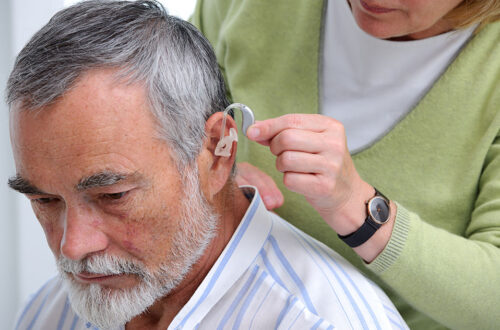Mobility means independence, and for children with physical challenges, the right pediatric wheel chair can open doors to school, play, therapy, and social life. Whether it’s a temporary need following surgery or a long-term solution for a medical condition, choosing a wheelchair for your child is a big decision—and one that goes beyond just wheels and frames.
From manual chairs for easy transport to high-tech pediatric power chairs, today’s options offer comfort, support, and customization like never before. But with so many models and features on the market, how do you know which one is right?
This guide walks you through what to look for, how to make the right choice, and how to create a care environment that supports your child’s physical and emotional well-being.
What Is a Pediatric Wheel Chair?
A pediatric wheel chair is a mobility device designed specifically for children who have difficulty walking due to illness, injury, or a congenital condition. These chairs are not simply smaller versions of adult wheelchairs—they are carefully engineered with child-friendly features like adjustable frames, lightweight materials, colorful designs, and supportive seating systems.
They also evolve with your child, offering customizable options to accommodate growth, development, and changing medical needs.
Types of Pediatric Wheel Chairs
There are two main categories:
1. Manual Pediatric Wheelchairs
These require the child or caregiver to push the wheels for movement. They are ideal for children with upper body strength or those who are being pushed by an adult. They are also:
- Lightweight and easy to transport
- Less expensive than powered models
- Available in folding and rigid frame versions
2. Pediatric Power Chairs
A pediatric power chair uses an electric motor and joystick control for mobility. It’s perfect for children who cannot self-propel or have limited stamina. Benefits include:
- Independence in movement
- Ergonomic seating and tilt features
- Suitable for indoor and outdoor use
Many parents opt for both: a manual chair for school or transport and a powered version for home use.
Key Features to Consider
Choosing the right wheelchair depends on your child’s specific needs. Here are the most important features to evaluate:
✅ Size and Fit
The wheelchair must properly support your child’s body without causing pressure or discomfort. Look for adjustable seat widths, heights, and depths to accommodate growth.
✅ Weight and Portability
If you’ll be transporting the wheelchair frequently, go for a lightweight or foldable model. Some pediatric chairs are under 20 pounds.
✅ Supportive Seating
Children with postural challenges may require headrests, lateral supports, harnesses, or custom-molded cushions. Proper positioning helps prevent strain and improves comfort.
✅ Mobility and Terrain
Will your child use the chair mostly indoors, outdoors, or both? Power chairs with large drive wheels and shock absorbers offer a smoother ride across varied surfaces.
✅ Controls and Adjustability
For pediatric power chairs, check joystick responsiveness and programming. Some models allow caregivers to override controls or set speed limits for safety.
✅ Style and Personality
Today’s wheelchairs come in bright colors and fun patterns—something that can boost confidence and help your child feel proud, not embarrassed, about using their chair.
Pediatric Wheel Chairs and Daily Life
A wheelchair should enhance your child’s day-to-day experiences, not limit them. Here are some practical tips to make the most of mobility:
- School: Choose a chair that fits under desks and allows smooth navigation in hallways. Consider a portable ramp for accessibility.
- Home: Rearrange furniture to create wider pathways and install safety rails. Pair the chair with accessible tools like hospital beds for safer daily transfers and care routines.
- Outdoor Play: Ensure tires and brakes are suited for playgrounds, sidewalks, or uneven surfaces.
- Transportation: If you plan to travel, check whether the chair is compatible with wheelchair-accessible vehicles or airline regulations.
Pediatric Power Chairs: When Is It Time?
It can be tough to decide when a manual chair is no longer enough. Signs your child might benefit from a pediatric power chair include:
- Fatigue after short distances
- Difficulty navigating independently
- Upper body weakness or pain
- Rapid outgrowing of manual chairs
- Increasing desire for independence
Power chairs not only reduce physical strain but also empower children to interact socially and engage in learning activities without waiting for assistance.
Integrating Hospital Equipment at Home
For children with complex medical needs, mobility often goes hand-in-hand with other equipment. For instance, pairing a wheelchair with adjustable hospital beds makes transfers easier and safer for both the child and the caregiver.
Many pediatric hospital beds come with side rails, remote controls, and elevation features to match the chair height. This minimizes physical strain and helps maintain a smooth routine—from sleep to mobility to therapy.
Funding and Insurance Tips
Wheelchairs can be expensive, but you may have access to financial help:
- Private Insurance: Most plans cover part or all of the cost, especially when prescribed by a physician.
- Medicaid: State Medicaid programs often cover durable medical equipment (DME) like pediatric chairs.
- Grants & Nonprofits: Organizations like UnitedHealthcare Children’s Foundation, Variety – The Children’s Charity, and Wheelchairs 4 Kids offer grants or donated equipment.
- School Systems: If the wheelchair is necessary for school access under an IEP (Individualized Education Plan), districts may provide or fund accommodations.
Final Thoughts
Choosing the right pediatric wheel chair is not just a medical decision—it’s a quality-of-life investment. From supporting posture and independence to boosting confidence and social interaction, the right wheelchair empowers your child to explore the world safely and comfortably.
Whether you’re looking into a lightweight manual chair or a versatile pediatric power chair, take the time to consult with therapists, doctors, and equipment specialists. And remember: pairing supportive equipment—like hospital beds or therapy seating—can create a truly accessible and healing environment at home.
Ready to find the perfect pediatric wheelchair for your child?
Explore top-rated models and talk to our specialists to ensure your child stays mobile, happy, and supported—every step of the way.








